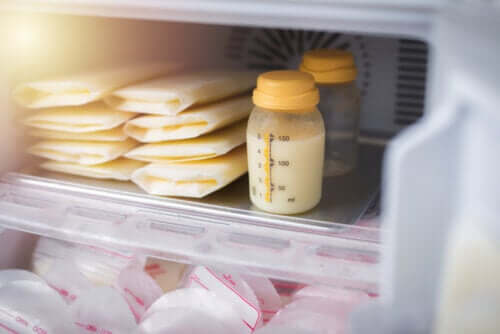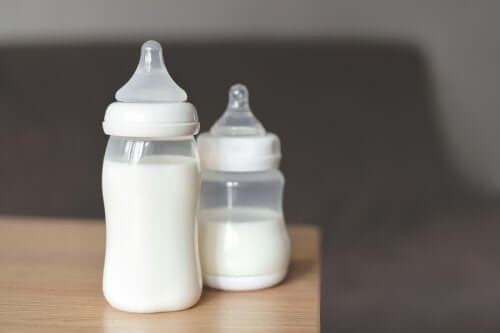Rancid Breast Milk: Causes and Solutions
Have you taken your milk out of the freezer and.... surprise! It smells strange and you think it's bad? So, what can you do about rancid breast milk?

Rancid breast milk can be a major problem. During breastfeeding, it’s common practice for mothers to extract and freeze their breast milk. However, while frozen, breast milk can develop a rancid taste. This event produces stress in the infant feeding routine and increases concerns among mothers about the quality of their frozen breast milk.
What’s the recommendation for freezing breast milk?
Recommendations for storing pumped breast milk vary depending on storage conditions. In general, breast milk can be stored at room temperature, below 78 degrees Fahrenheit, for 4-6 hours.
Also, it can be stored in a refrigerator at temperatures below 39 degrees Celsius for 3-8 days. Finally, in a freezer at temperatures of 1 to -4 degrees, it can be stored for at least 3 months. Consequently, when breast milk is expected to be consumed after 3-8 days, freezing is a common practice for mothers who handle their milk at home.
What causes rancid breast milk?
The typical taste of rancid breast milk is caused by the products of lipolysis (or digestion) of the milk. At this point, it’s important to note that, at the time of birth, the baby’s gastrointestinal system hasn’t reached maturity.

Therefore, many of the digestive functions are incipient or absent in newborn babies. Only by twelve months of age will all gastrointestinal functions have been acquired.
But wise nature has it all figured out. Breast milk, in addition to its high fat or lipid content, also possesses the enzymes necessary for its digestion: lipases. When lipases attack the lipids in milk, the milk becomes rancid.
The details of this process
Digestion of milk triglycerides (TG) results in the release of glycerol and free fatty acids (FFA). As large amounts of FFA accumulate, the rancid taste in the milk increases. This is mainly due to short and intermediate chain volatile fatty acids.
In fresh milk, milk lipids exist in the form of fat globules 0.1 to 20 microns in diameter. Such globules act as pockets that enclose the triglyceride content and their membrane isolates the internal TG from the lipase that travels in the milk serum. For this reason, fresh milk is never rancid.
However, the freezing process results in crystallization of the milk lipids and damages the fat globule membrane. This is what allows milk lipolysis to occur.
The lipases in human breast milk
Human milk differs from cow’s milk in that it contains two lipases: Lipoprotein lipase and bile salt-stimulated lipase. The presence of lipases in ingested milk has important nutritional implications.
Thus, because lipase fragments TGs, the infant’s body can assimilate this fat. The function of lipase is therefore prodigious and very useful for babies.
But why doesn’t all milk go rancid?
It’s important to understand that the lipase content varies from one mother to another. In fact, some women express more lipases or have lipases that are more easily activated. For that reason, not all mothers have problems with rancid milk.

Will rancid milk be bad for the baby?
This is the most frequent concern in women whose milk becomes rancid due to freezing. Undoubtedly, rancid milk isn’t bad for the baby. This milk isn’t contaminated, nor will it cause any illness in the infant.
It’s important to consider that babies already know the taste of pre-digested milk. Every time they spit up, milk from the stomach that has already undergone the action of lipases reaches their mouths. Despite this fact, it may happen that the baby resists the taste of the rancid milk and therefore rejects it.
What to do if your baby doesn’t tolerate rancid milk?
When babies reject thawed milk, experts who’ve studied this issue recommend trying to provide freshly pumped breast milk or breast milk that’s been frozen for less than 7 days.
At the same time, it’s important to put into practice the precept of using the oldest milk in the refrigerator or freezer first. Always remembering that the freezing time limit is less than 7 days. All this in order to avoid the stress of infant feeding.
Finally, we also know that pasteurizing (or scalding) fresh milk before freezing inactivates lipases, reducing rancidity.
